What's New
Displaying results 1801 - 1810 of 4911
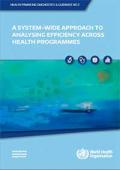
Resource | Publications,
Health programmes are able to target health interventions for specific diseases or populations, and historically, countries have relied heavily on them to deliver priority services. In low and middle income countries, this organizational approach has been reinforced by donor assistance for priority areas that often leads programmes to operate largely autonomously from one another in seeking to optimize the achievement of a specific objective. This dynamic has implications for how priority interventions are delivered and sustained, sometimes with separate organizational arrangements resulting in inefficient overlaps and duplications. As contexts change, and in particular, as responsibility for funding these programmes shifts more towards domestic resources, maintaining an array of programmes with distinct, separate organizational arrangements is unlikely to be affordable.
This paper presents an approach to conceptualizing and addressing inefficiencies arising from the way that health programmes operate within the context of the overall health system.
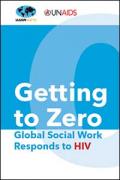
Resource | Publications,
This book represents a collaboration between the International Association of Schools of Social Work (IASSW) and the Joint United Nations Programme on HIV/AIDS (UNAIDS). IASSW is an association of institutions of social work education, organizations supporting social work education and social work educators around the world. The values and mission statements of the two organizations have synergies that encouraged cooperation between them in the realization of their shared aims.
It is more than a compilation of scientific articles on the response to HIV by social workers. It is also a collection of stories told with candour about restoring hope, dignity and social capital to people and their families in order that theu can withstand the shocks they encounter in life.
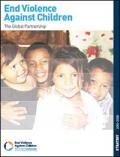
Resource | Publications,
The Global Partnership to End Violence Against Children was formed by countries, civil society, the United Nations, the academic community and the private sector to transform these shared responsibilities into concrete action.
As this strategy makes clear, the Partnership provides a global platform for countries – and all those working toward the goal of ending violence against children – to share lessons learned and best practices, and to facilitate greater cooperation and coordination of our common efforts.
At the national level, and working through its members, the Global Partnership will support national action to make ending violence against children a policy and programme priority – by strengthenin laws to prevent and punish violence against children... improving the way we respond to violence against children and reduce its impact... targeting those most vulnerable to violence with access to information and support... and above all, changing the mindset that violence is permissible in our institutions, our communities or our homes.
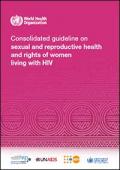
Resource | Guidelines,
There were an estimated 17.8 million women aged 15 and older living with HIV in 2015, constituting 51% of all adults living with HIV. Adolescent girls and young women are particularly affected; in 2015 they constituted 60% of young people aged 15–24 years who were living with HIV, and they also accounted for 58% of newly acquired HIV infections among young persons in that age group. In many countries, women living with HIV do not have equitable access to good-quality health services and are also faced with multiple and intersecting forms of stigma and discrimination. Furthermore, women living with HIV are disproportionately vulnerable to violence, including violations of their sexual and reproductive rights.
This guideline is meant to help countries to more effectively and efficiently plan, develop and monitor programmes and services that promote gender equality and human rights and hence are more acceptable and appropriate for women living with HIV, taking into account the national and local epidemiological context. It discusses implementation issues that health interventions and service delivery must address to achieve gender equality and support human rights.
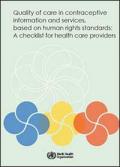
Resource | Publications,
Unmet need for contraception remains high in many settings, and is highest among the most vulnerable in society: adolescents, the poor, those living in rural areas and urban slums, people living with HIV, and internally displaced people. The latest estimates are that 225 million women have an unmet need for modern contraception, and the need is greatest where the risks of maternal mortality are highest.
This document presents a user friendly checklist specifically addressed to health care providers, at the primary health care level, who are involved in the direct provision of contraceptive information and services. It is complimentary to WHO guidelines on Ensuring human rights in the provision of contraceptive information and services: Guidance and recommendations, and the Implementation Guide published jointly with UNFPA in 2015. This checklist also builds on WHO vision document on Standards for Improving Quality of Care for Maternal and Newborn Care and its ongoing work under the Quality, Equity and Dignity initiative. The checklist should be read along with other guidance from WHO and also from partners.
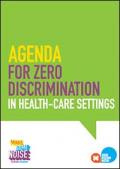
Resource | Publications,
There has been great progress in the response to HIV during the past decade. The world is one step closer to eliminating HIV infections among children, more people living with HIV know their status and are accessing HIV treatment and AIDS-related deaths are declining.
However, throughout the world, stigma, discrimination, exclusion and inequality continue to make people vulnerable to HIV and hinder their access to HIV prevention, treatment and care services.
People living with HIV, key populations and other vulnerable groups continue to face stigma, discrimination, criminalization and ill-treatment based on their actual or perceived health status, race, socioeconomic status, age, sex, sexual orientation or gender identity or other grounds. Discrimination and other human rights violations may occur in health-care settings, barring people from accessing health services or enjoying quality health care. Workers in health-care settings can also face discrimination from their co-workers and employers, or work in environments where their rights, roles and responsibilities cannot be fully exercised.

Resource | Fact Sheets,
This document presents HIV/AIDS statistics in Hong Kong for the period of 1984 to 2016.

Resource | Presentations,
Hepatitis A is a notifiable disease under the Prevention and Control of Disease Ordinance (Cap 599) of the Hong Kong laws. An unusual increase in the number of hepatitis A among attendees of Integrated Treatment Centre (ITC) of Department of Health (DH), who were HIV positive men who have sex with men (MSM), were recorded by CHP recently.
Retrospective analysis of laboratory information revealed that the virus from most of the cases reported since September 2015 were shown to be identical to either one of two genetically distinguishable groups within genotype 1A (4 and 8 cases, 1 case pending). Investigation is ongoing to study if the outbreak has spread to other MSM in the community.
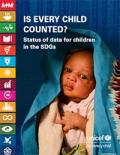
Resource | Publications,
The 2030 Agenda for Sustainable Development charts an ambitious course for the coming decade and beyond. Reaching further than its precursor, the Millennium Development Goals, the Agenda brings together the social, economic and environmental dimensions of development. The Sustainable Development Goals (SDGs) are a clarion call for a more equitable future, and at their core is a commitment to leave no one behind. The SDGs can only deliver on the promise of equity if the world knows which children and families are thriving and which are being left behind – both at the launch of the Agenda and throughout its implementation.
This report considers both the implications of the 2030 Agenda for children and the data required to monitor the situation of children within the SDG framework.
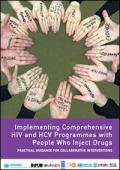
Resource | Guidelines,
Previously published United Nations (UN) guidance documents describe the content of effective HIV and HCV prevention interventions for people who inject drugs, in the context of harm reduction and HIV prevention for key populations. UN guidance is also grounded in an approach expressed in the critical enablers described in Table 2—strategies, activities and approaches to increase the accessibility, acceptability, coverage, quality and uptake of interventions and services for key populations. This tool offers practical advice on how to implement these programmes and these approaches for and with people who inject drugs, across the full continuum of HIV and HCV prevention, diagnosis, treatment and care, aligned with UN guidance. It contains examples of good practice from around the world that may support efforts in planning programmes and services, and describes issues that should be considered and how to overcome challenges.
This tool does not seek to ignore the complex policy and legislative environment around drugs and
injecting drug use in most countries, nor the need for advocacy to confront the stigma, discrimination and human-rights violations faced by people who inject drugs.





